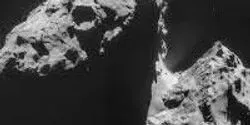space research

One has experience working with robots in space. The other two have experience in areas associated with mining, including mineral processing and rock mechanics. Together, these three researchers from West Virginia University will work to create a system that will provide NASA data on asteroids.

The central regions of many glittering galaxies, our own Milky Way included, harbor cores of impenetrable darkness—black holes with masses equivalent to millions, or even billions, of suns. What is more, these supermassive black holes and their host galaxies appear to develop together, or "co-evolve." Theory predicts that as galaxies collide and merge, growing ever more massive, so too do their dark hearts.

Working at temperatures matching the interior of the sun, researchers at Sandia National Laboratories’ Z machine have been able to determine experimentally, for the first time in history, iron’s role in inhibiting energy transmission from the center of the sun to near the edge of its radiative band — the section of the solar interior between the sun’s core and outer convection zone.

For the first time, a mission designed to set its eyes on black holes and other objects far from our solar system has turned its gaze back closer to home, capturing images of our sun. NASA's Nuclear Spectroscopic Telescope Array, or NuSTAR, has taken its first picture of the sun, producing the most sensitive solar portrait ever taken in high-energy X-rays.

It’s the ultimate location for a “no-gravity control” experiment—space. When NASA launches its SpaceX Dragon rocket from Cape Canaveral, Fla. on Tuesday, Jan. 6, a Southern Illinois University Edwardsville research project will be on board, traveling to the International Space Station.













